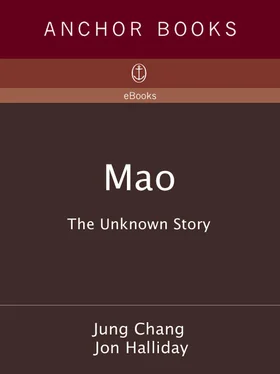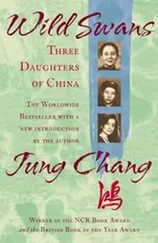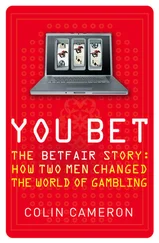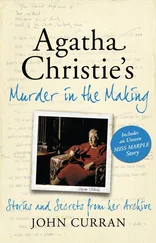Mao became doleful from drink, and recounted the various punishments visited on him. At one point, lamenting that he was no longer the big boss, “tears ran down his cheeks. He was coughing from time to time, and his face looked drawn and dried and sallow. Under the flicker of a tiny oil lamp, he was quite a picture of dejection.”
Neither the collapse of the Communist state nor the separation from his son could wound Mao like his loss of personal power.
Then, just when everything seemed set, Mao’s plans nearly fell apart. Days before the planned departure, his temperature shot up to 105.8°F and he grew delirious with malaria. It was the malaria season, and the mosquitoes in Yudu were so thick in the air that they flew right into people’s nostrils. Even quinine failed to do the trick. It was vital for him to recover — and recover fast, so that he could leave with the others. The best doctor in the Red area, Nelson Fu, who had looked after Mao in the missionary hospital in winter 1932–33, raced over from Ruijin and got him into good enough shape to travel. Patient and doctor both knew Fu had saved Mao’s life — and his political fortunes.
Dr Fu became the overseer of Mao’s physicians for decades. In 1966, in Mao’s Great Purge, he wrote to Mao and brought up this episode in Yudu. “I saved your life,” he said, “I hope you can save mine now.” The then 72-year-old had been savagely beaten, his ribs broken and his skull fractured. Mao did lift a finger, but not very forcefully, by minuting on Fu’s letter: “This man … has not committed big crimes, perhaps he should be spared.” But then he heard that Fu had allegedly talked to other Party leaders about his (Mao’s) health, which was a big taboo for Mao. Mao let Fu be thrown into prison. The septuagenarian doctor did not last two weeks, and died on the floor of his cell.
MEANWHILE THE RED ARMY kept up a fighting retreat as Chiang’s army advanced, while preparations for the evacuation went on in secret. The move was forced, but it enabled the Reds to carry out a strategic shift towards the northwest, with the ultimate goal of reaching Russian-controlled borders, in order to receive arms — an operation later known as “to link up with the Soviet Union.” It had been planned for years. Back in 1929 GRU chief Berzin had briefed Sorge that his mission was to try to get the Chinese Red Army to the Soviet border.
In July, one unit of 6,000 men was sent out in the opposite direction as a decoy. It carried 1.6 million leaflets, which filled 300 shoulder-pole loads, and adopted the grandiose name of “Red Army Vanguard Northbound to Fight the Japanese.” Its movements were given maximum publicity, and the unit came to realize that it was a decoy, something that even its leaders had not been told. The men felt bitter, and doubly so because the task assigned was pointless: a small unit like theirs could not possibly fool the enemy or draw them away from Ruijin. Instead, they found themselves being relentlessly pursued by other Nationalist forces. Within a few months, virtually the entire decoy force was wiped out.
Part of the preparation for the evacuation was screening all proposed evacuees, a process run by Chou En-lai. Those rated unreliable were executed. They totaled thousands. Among those killed were most of the teachers in army schools, who were often captured former Nationalist officers. The executions took place in a sealed-off mountain valley, where a huge pit was dug. The victims were hacked to death with knives, and their bodies kicked down into the pit. When this pit was full, the rest were made to dig their own holes in the ground, and were then hacked to death, or buried alive.
The massacre was carried out by the state security system — although many security men had themselves by now lost faith in the regime and were being killed in their turn. One of those who had lost faith was the head of the team guarding the Military Council. In the confusion of leaving, he slipped away and hid in the hills. But the authorities found his hiding-place by arresting his girlfriend, a local peasant. After a gun battle, this expert marksman shot himself.
IN OCTOBER 1934, the rule of this brutal regime came to an end. At Yudu, pontoon bridges were set up across the river. At the prow and stem of each boat hung a barn lantern, and more lanterns and torches shone on both banks, glowing in the water’s reflection. Families of the soldiers and organized peasants lined the banks to say goodbye. The badly wounded had been billeted on local families. As troops padded past on the cobblestone path underneath the city wall, down to the crossing point, in a corner house near the wall a twelve-year-old boy had his eyes glued to a crack in the door, holding his breath. His father, a small shopkeeper, had been killed four years before, at the height of Mao’s AB slaughter, when people were being executed even for being “active shop-assistants.” Like many others, he was glad to see the back of the Reds, as he made abundantly clear when we met him sixty years later.
At about 6:00 PM on 18 October, looking gaunt but composed, with his long hair combed back, Mao left the local Party HQ surrounded by bodyguards, crossed the street, passed the Sung-dynasty archway and stepped onto the pontoon bridge.
This rickety bridge did not just carry Mao across the water, it bore him into legend. His murderous past and that of the CCP regime were about to be left behind. And Mao himself was about to create the most enduring myth in modern Chinese history, and one of the biggest myths of the twentieth century—“the Long March.”
Moscow’s monthly subsidy to the CCP for 1934 was 7,418 “gold dollars.” The Russians tried to send in arms direct, but the Chinese Red Army was unable to fulfill Moscow’s recommendation to establish a foothold at a port, where “contraband munitions and medicine could be transported.”
This sort of tragedy was by no means uncommon. The revolution brought much heartache to its adherents. Before they took power, Communists were expected not just to make sacrifices vis-à-vis their children, but literally to sacrifice them , and selling one’s children — or having them sold — to raise funds for the Party was not uncommon. The Party cell of Gui-yuan’s friend Zeng Zhi in Amoy sold her baby son for 100 yuan; the buyer paid in advance and the Party spent the money before presenting her with a fait accompli. More than half a century later, she said: “Of course, it was extremely painful. Before my son was delivered to [the buyer’s] house, my husband and I carried him to Sun Yat-sen Park to play. He was such a cute baby, over 40 days, he smiled all the time. We gave him the name Tie-niu (Iron Ox). He never cried without a good reason, and rarely passed stool or water on himself. So we carried him there to play. He was really really happy. Then he was gone. And it was just unbearable. I managed to overcome the hurt. But my baby died 26 days later … Our Party Secretary didn’t dare to tell me, although I had heard. He kept quiet as I didn’t say anything. Sometimes at night, it hurt so much I wept, but quietly, because it was embarrassing to let others know [that she was crying for her child]. Then one day, he saw I had been crying, and he guessed I knew, and he apologised to me.”
Red leaders acknowledged later that the name was only for propaganda. “No one dreamed of a march north to fight the Japanese,” Braun observed.
12. LONG MARCH I: CHIANG LETS THE REDS GO (1934 AGE 40)
SOME 80,000 PEOPLE set off on the Long March in October 1934. The procession moved out over a ten-day period in three columns, with the two oldest and core units, under Lin Biao and Peng De-huai respectively, on each side of the HQ. The 5,000-strong HQ consisted of the handful of leaders and their staff, servants and guards. Mao was with the HQ.
Читать дальше










